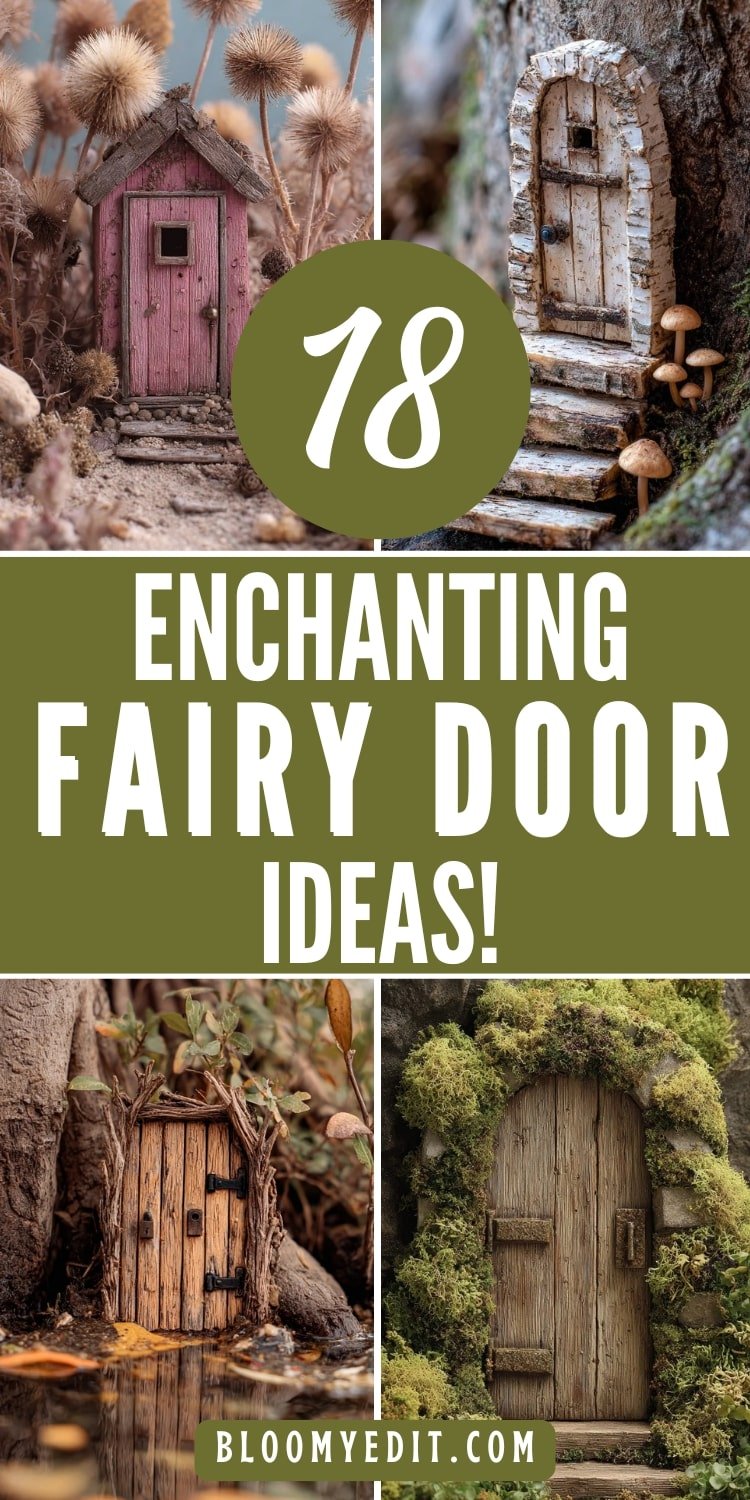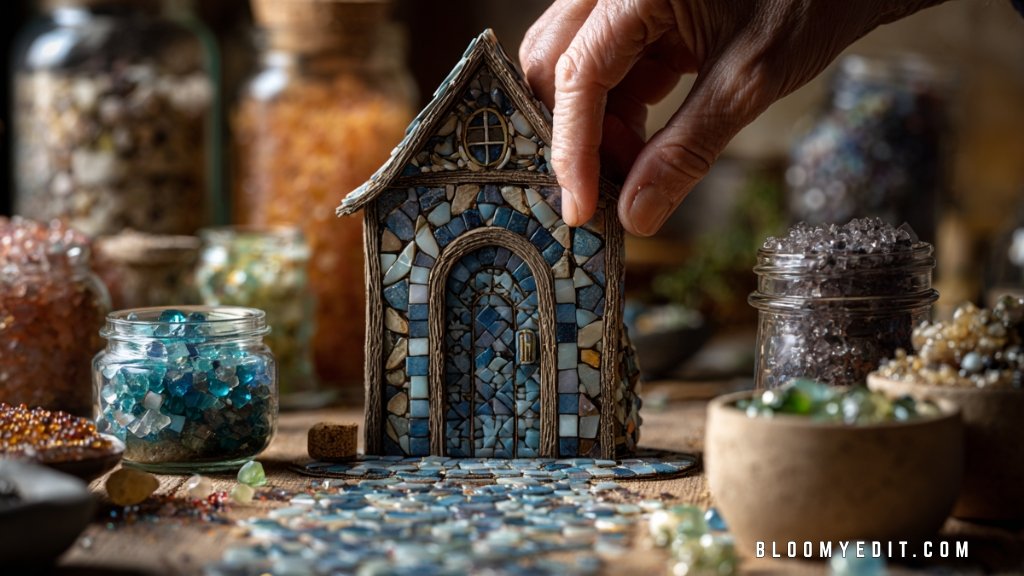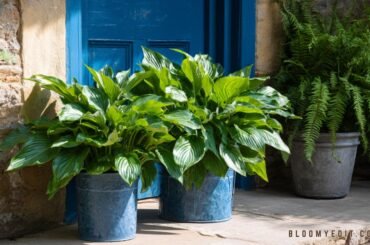You’re walking through your garden, or maybe just down the hallway past your kid’s bookshelf, when your eyes catch a quiet little corner. Bare. Overlooked. But full of potential. And suddenly you think, what if a fairy lived here? Not a big, flashy fairy. Just a tiny one, tucked behind a secret door, maybe with a pebble path or a thimble-sized lantern by the stoop.
That’s the charm of fairy doors. They aren’t just decorations, they’re invitations to imagine. To slow down. To wonder what might be possible in the smallest of spaces.
Whether it’s nestled at the base of a tree, hidden along a fence, or painted onto a bedroom wall, a fairy door turns the ordinary into something just a little enchanted.
And here’s the best part: there are no rules. You can go whimsical, rustic, colorful, or classic. Use craft sticks and bottle caps or find something a little more polished. It’s not about perfection, it’s about play.
So if you’ve been craving a little magic in your everyday surroundings, here are some 18 Enchanting Fairy Door Ideas to bring a sprinkle of wonder to your world, no pixie dust required.
1. Fairy Door with Aged Wood and Dusty Color
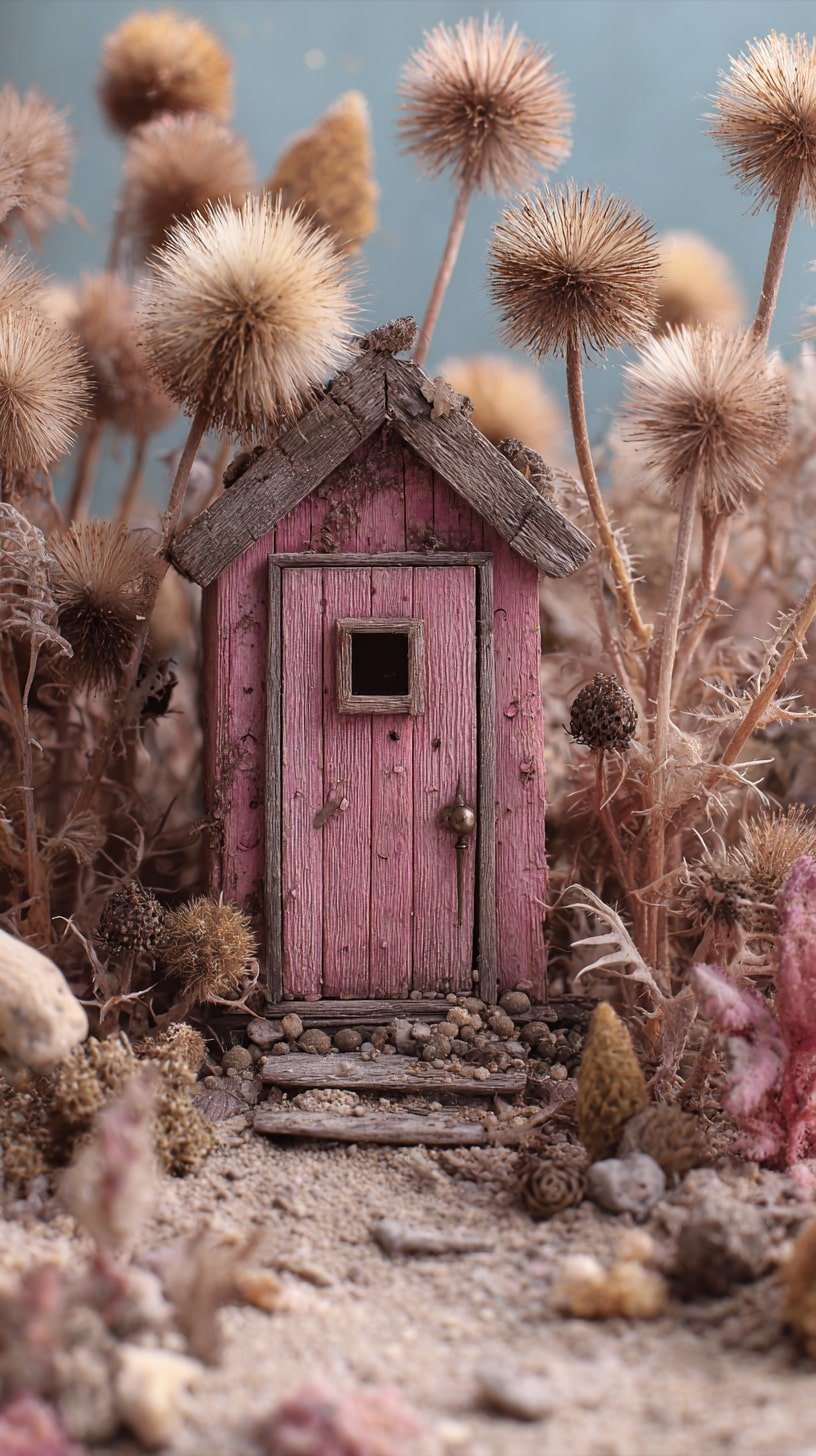
Rough-hewn wood. Muted rose. The door feels found, not made, like it’s been waiting under dry brush for decades. Thistle heads frame it like guards, tall and ghostly.
Pebbles anchor each step, deliberate but uneven. That small square window? Pure mystery. Desaturated tones make magic feel real.
2. Line Tree Bark with Birch
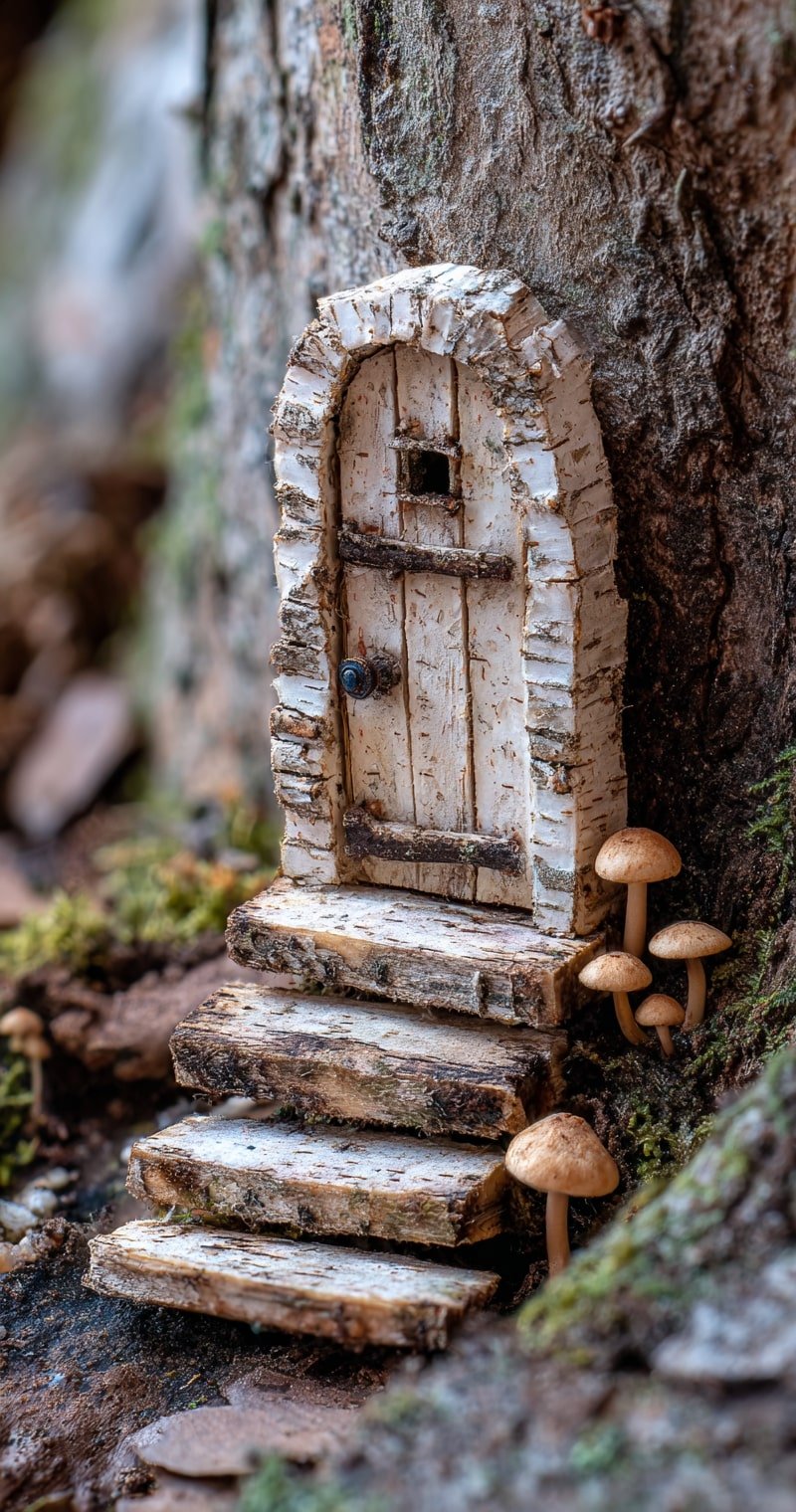
Door, frame, even steps, all crafted from birch slivers. That pale bark texture wraps into the tree like it grew there. Uneven treads feel organic, shaped by weather not tools.
Soft mushrooms lean in, almost nodding. Minimal contrast. It’s immersive, nearly hidden. A trick of the eye that rewards closer looking.
3. Tree Trunk with Twigs for a Rustic Fairy Door
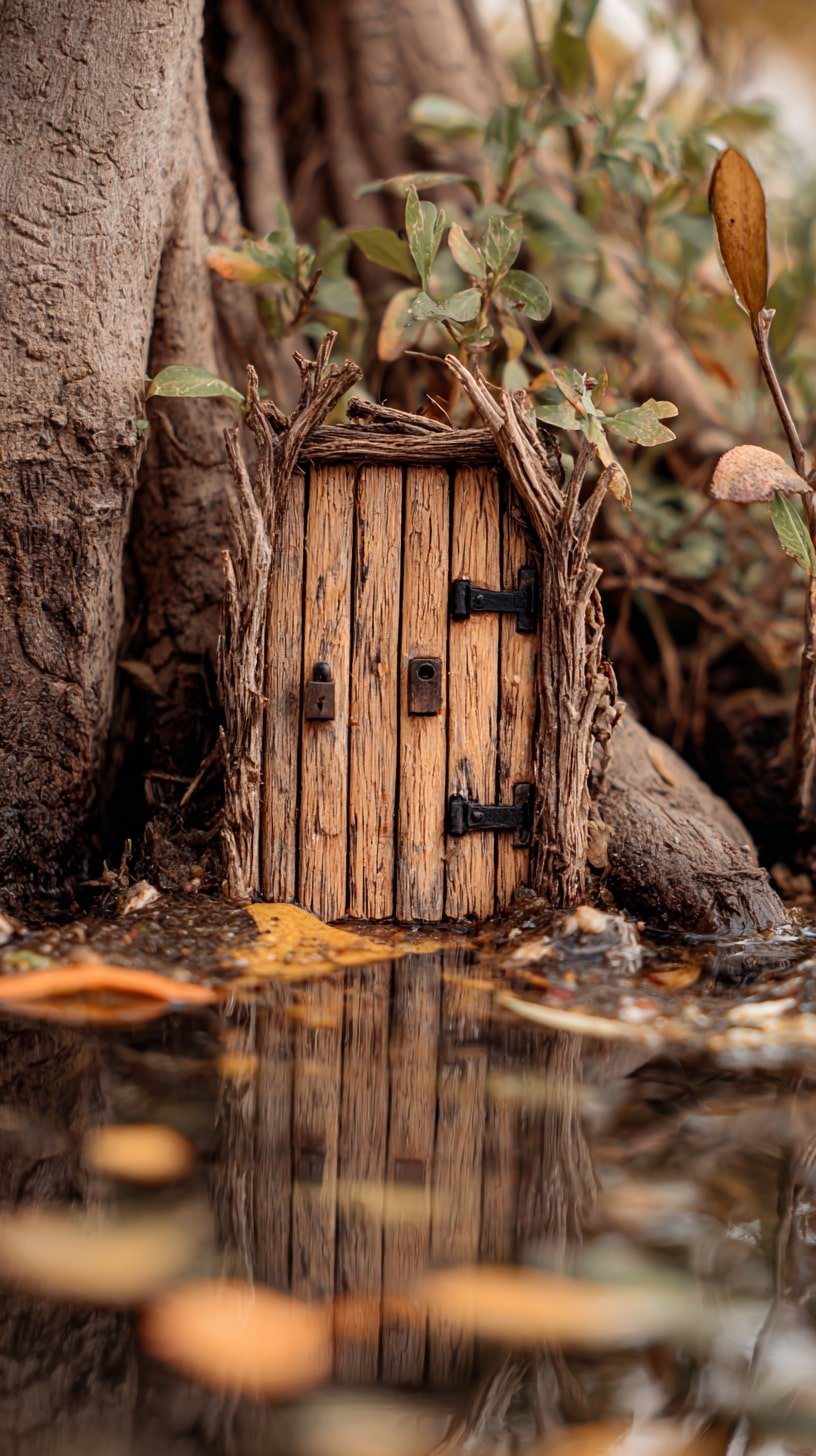
Rough-cut planks and knotted twigs set a tone. No polish. No symmetry. Just bark, branch, and aged iron hinges. That’s what makes it feel believable, like forest folk built it from scraps.
Twigs arch loosely around the door, hinting at movement. Reflections in shallow water double the magic. Natural decay becomes part of the charm.
4. Stone Entry with Moss-Covered Arch
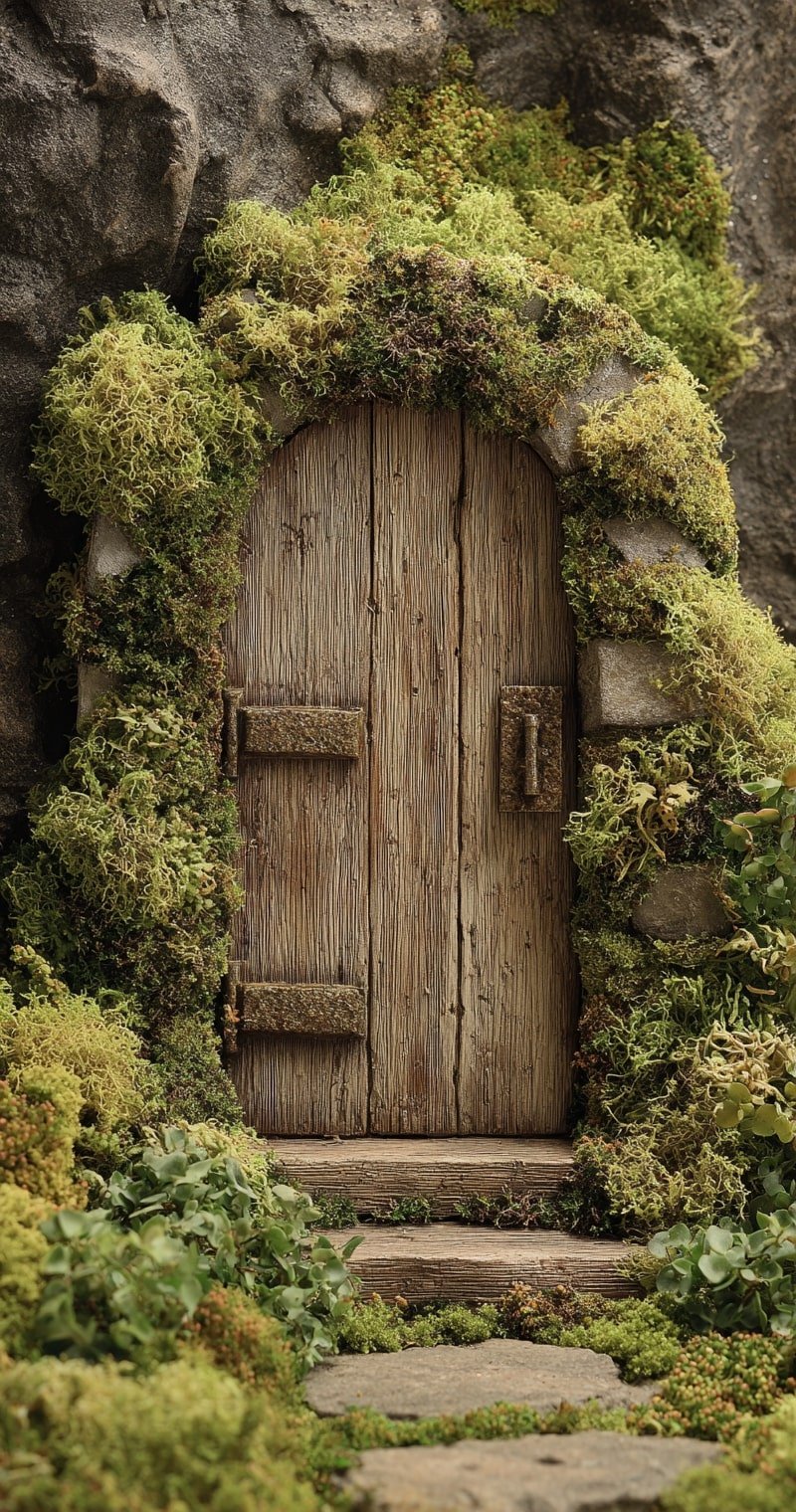
Wood grain runs deep. Vertical lines stretch the height of the door, drawing eyes upward while grounding the shape. It’s old. Untreated. Splintered in places. That’s part of its pull. But it’s the moss that lifts it.
Dense, tufted, layered in varied greens, wrapping around rough-cut stones like a blanket. Stone and plant blur.
5. Lantern Beside a Curved Door for Forest Glow

The arch pulls everything up, makes the entry feel taller, older, a bit magical. Then comes texture, grainy wood, bluewashed, rough-edged, like it’s been here decades.
Now the light. That little lantern changes everything. Glows amber. Casts shadows across moss and mushrooms.
6. Found Buttons for a Whimsical

Dozens of mismatched buttons spill like blooms across a weathered blue door, each one stitched with tiny stories. No symmetry, just playful balance.
Earthy frame tucks into thick tree roots, making the whole entry feel grown, not built. Folk craft meets fantasy. Looks handmade. Feels loved.
7. Hollow Niche for a Stone-Built Fairy Entrance

Chisel work turns a rugged stone slab into a shallow basin, swirling with hand-cut texture. That rim detail, tight, rhythmic, hypnotic, draws eyes inward. Could be a portal. Could hold a door, or light.
What matters is the craftsmanship. Rough meets refined. Human touch visible. Magic starts where effort leaves a mark.
8. Miniature Door with Lavender Tones and Golden Hardware
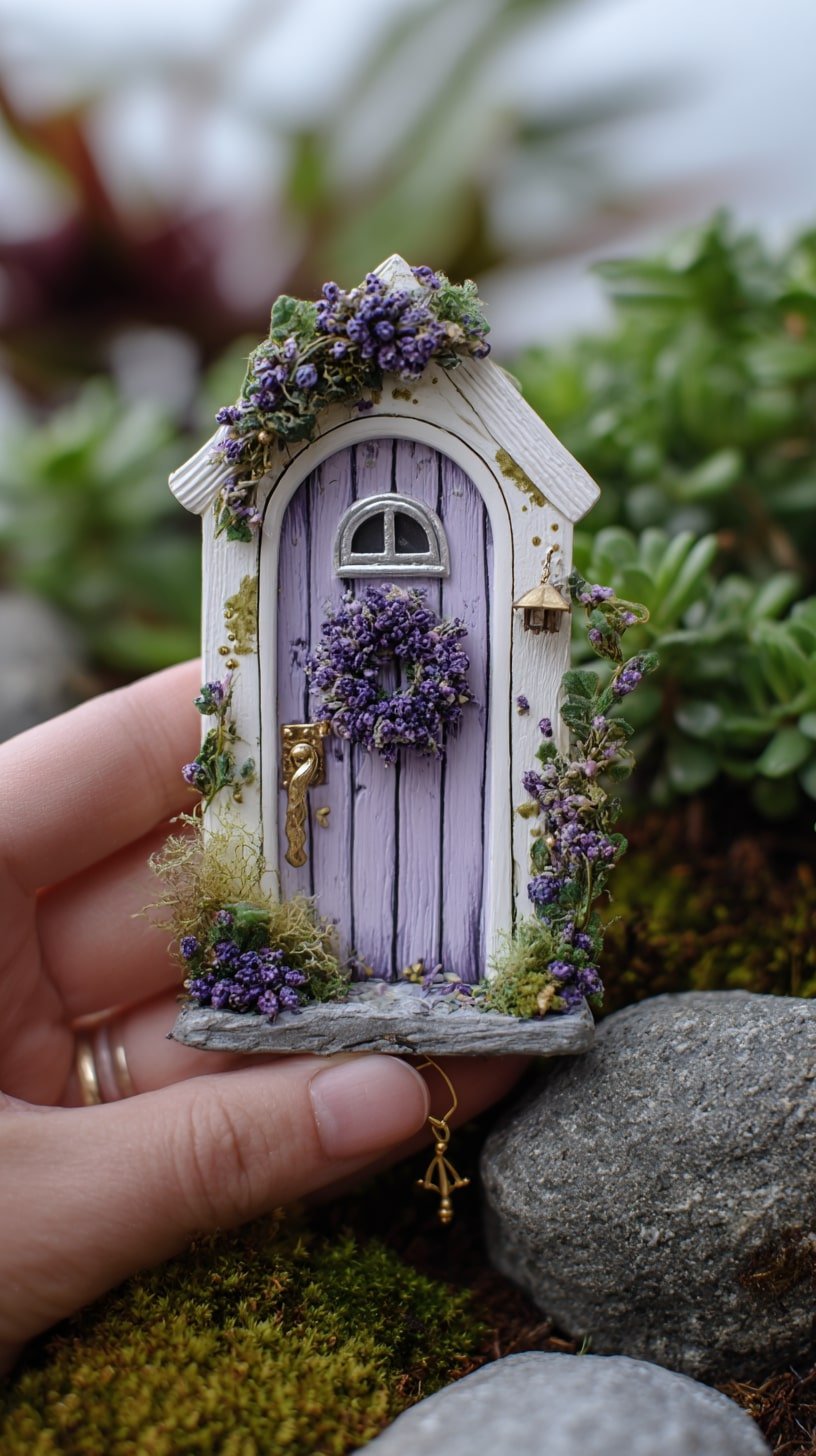
Delicate touches shine. Soft lilac planks paired with a curved white frame feel storybook sweet. But it’s the detailing, brass handle, ringed bell, layered floral wreath, that elevates.
Texture comes from dried lavender and faux moss tucked around edges. Compact but ornate. Works beautifully in herb gardens or fairy herbariums.
9. Rustic Grain with Delicate Human Touch

Raw wood, weathered and furrowed, sets a grounded backdrop. Moss pushes against edges, soft but unkempt. Then, contrast.
A polished diamond solitaire, modern and precise, catches light against the grain. It’s a tactile tension. Beautifully when fairy doors blend emotional tone with visual friction.
10. Mini Door with Wildflowers and Curved Framing

That soft aqua blue pops against moss and bark, kept cozy with a rounded top frame. Edges curve in gently. Feels like it belongs. Look close, though.
The real delight comes from detail: the hand-cut letterbox, the deep grain, the scattering of forget-me-nots. Imperfection adds soul.
11. Tree-Mounted Fairy Door with Childlike Color and Imagination

Soft pastels layer in loose brushstrokes, blending sky tones with meadow florals. Door paneling mimics cottage trim, simple and scaled. But look closer.
What stands out is scale, large enough to invite play. Big enough to reach, sketch, revisit.
12. Fairy Door with Shattered Tile and Sapphire Glass
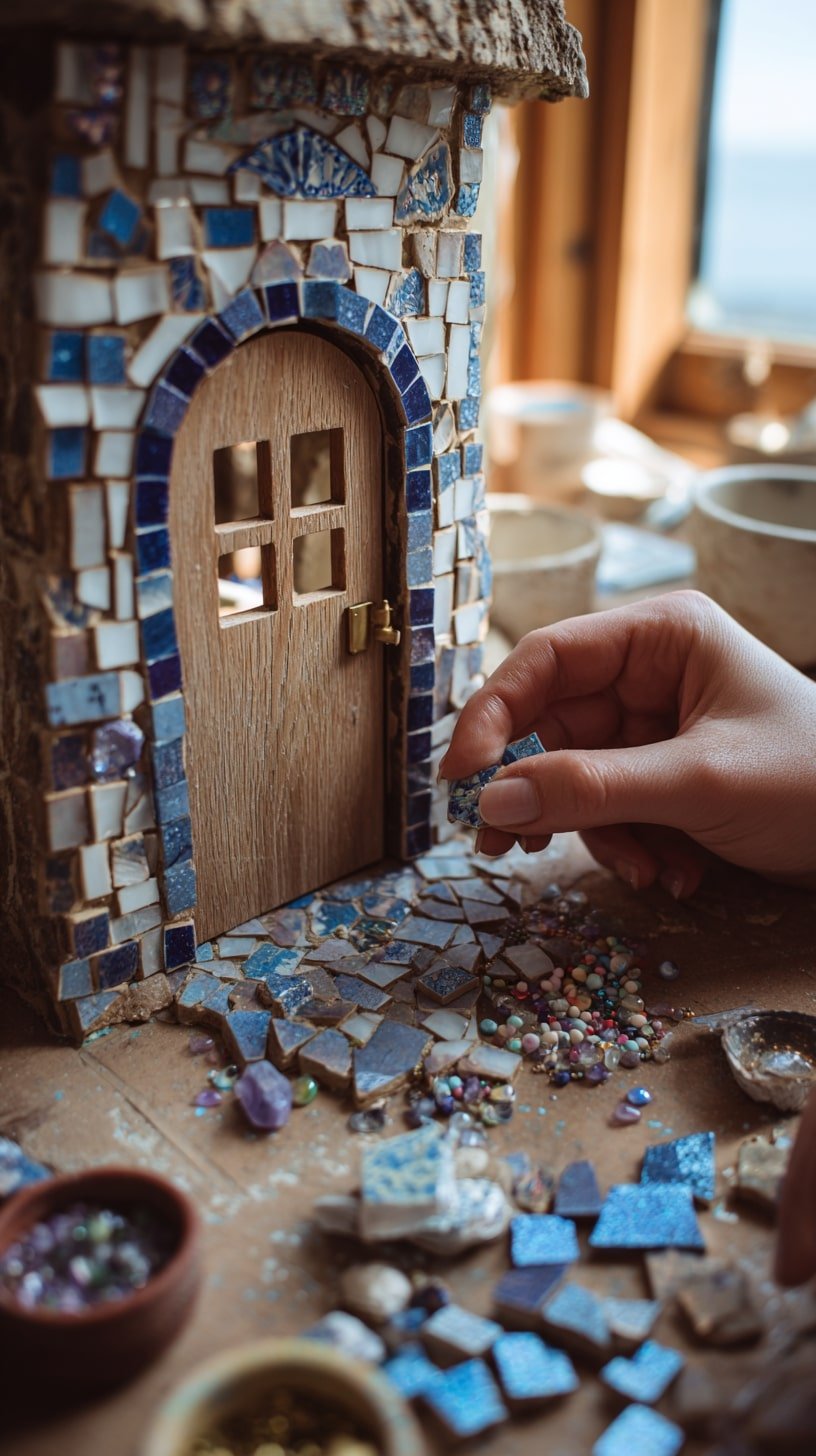
Broken ceramic, stained glass, bits of mirror. Then curve them tightly around soft wood grain, arched for charm, tiled for texture.
Hues stay in a narrow band, mostly indigo and pearl, so things stay cohesive even with all the detail.
13. Woodland Entrance into a Grassy Hillside

This door vanishes into landscape, dark wood flush with a moss-covered slope, framed by overgrown grass and slate. Subtle. Stark.
Nearly mythical. The single runic symbol etched in bone-white breaks the camouflage, hinting at story, maybe even danger.
14. Fairy Entry with Pebble Path and Bright Blooms
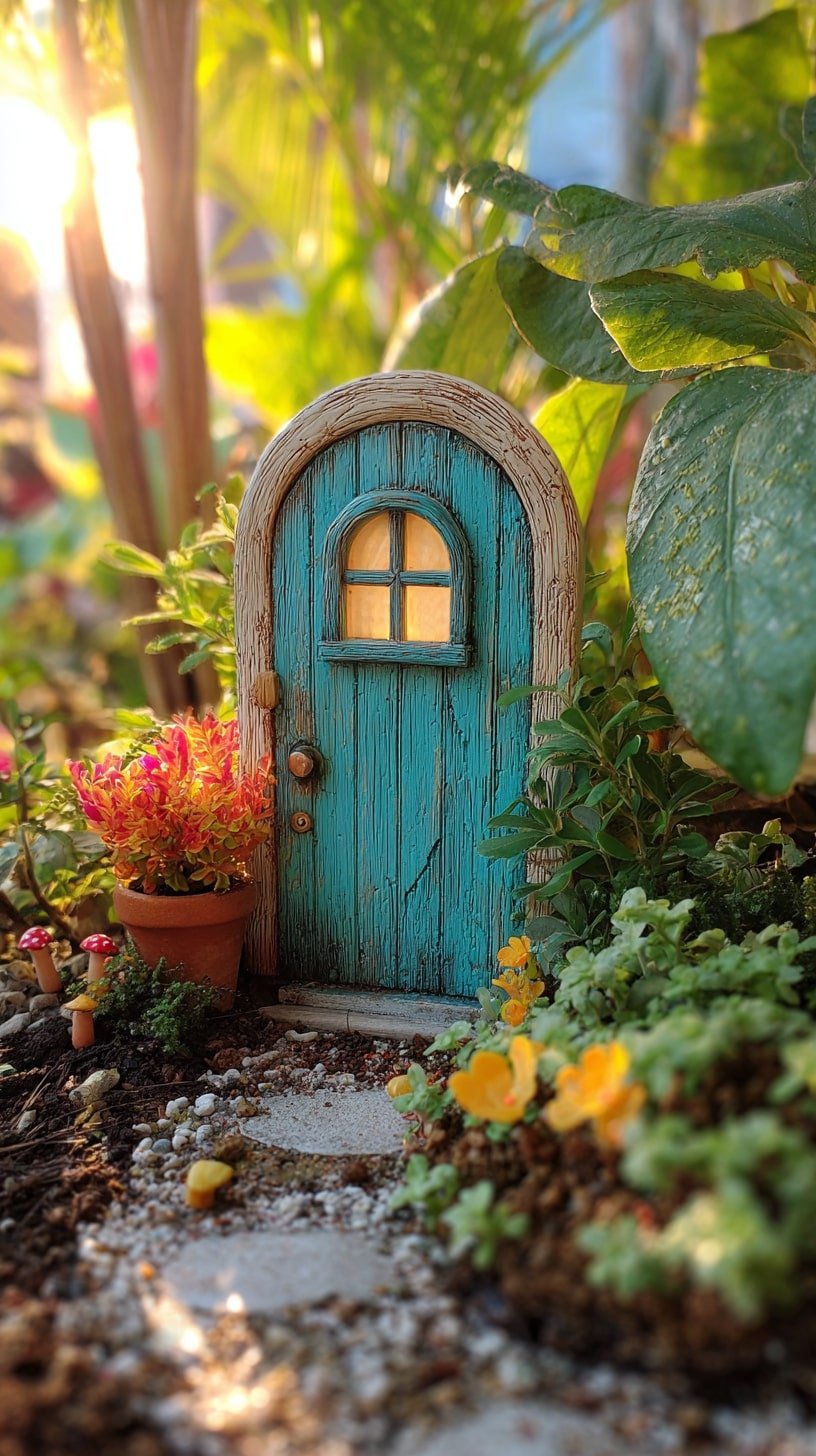
A turquoise arched door anchors the space with vibrant contrast against trailing greens and gold. Weathered wood grain adds age, a lived-in look.
Stone pavers form a gentle curve, leading the eye inward. Tiny details do the lifting, potted foliage, mini mushrooms, even a lit window glow.
15. Stained Glass to Cast Woodland Light

Color does the magic here. Jewel-toned stained glass pulls in twilight, breaking it into fragments of amber, violet, and fire red. No bulbs, yet it glows.
The arched Gothic shape adds mystery, slightly taller, sharper than the usual cottage curve. Rough-hewn planks, rich indigo paint, and a pebble path keep it grounded.
16. Tree-Topped Bookshelf for Whimsy and Wonder
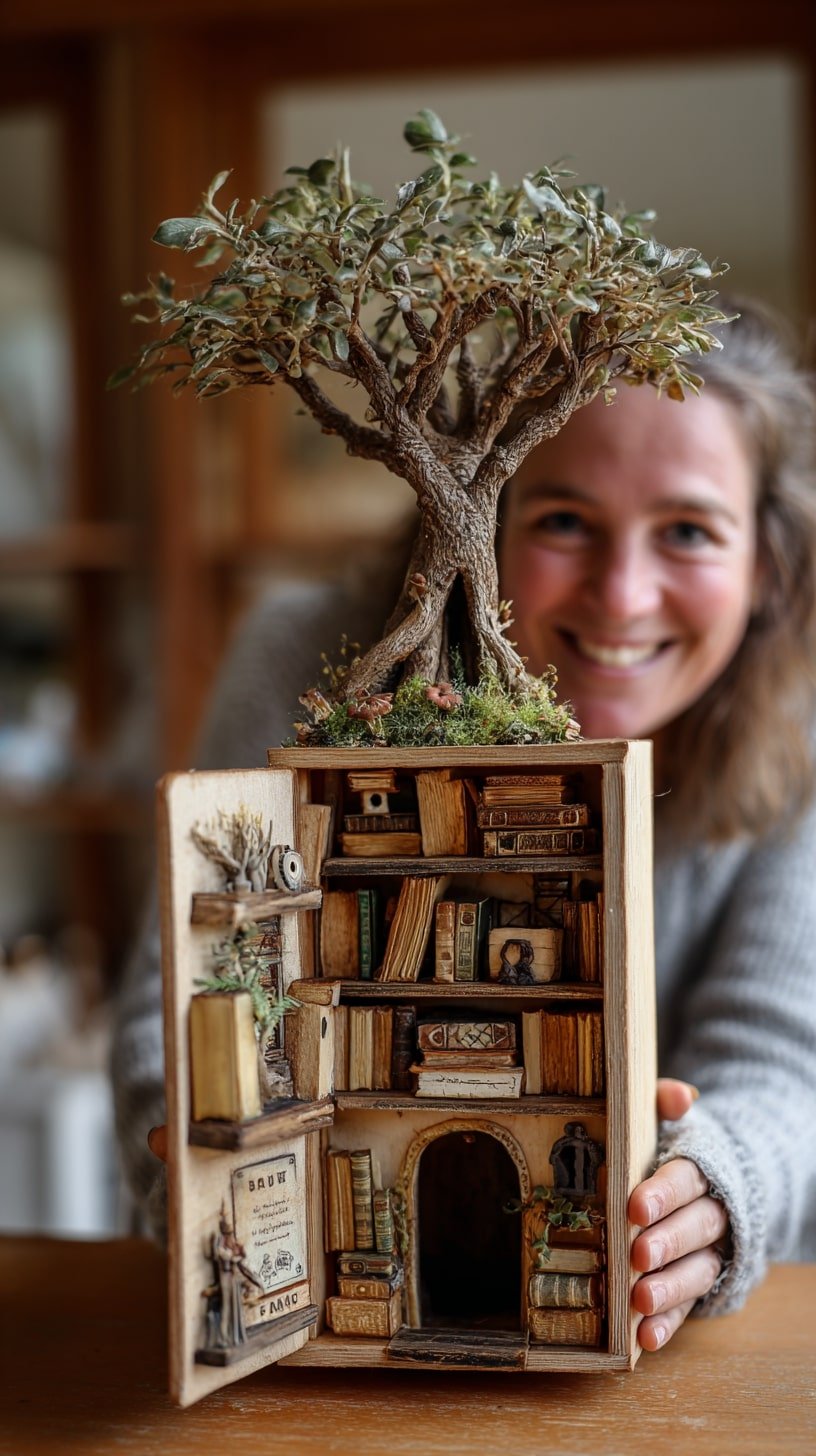
Hand-sculpted spines, tiny scrolls, and tucked-away trinkets layer in texture without clutter. Each nook feels deliberate.
Then it hits, there’s a tree growing from the roof. Bark detail, tiny mushrooms, moss tucked near roots. The door? Small, arched, and slightly hidden in shadow.
17. Shell Handle into Driftwood for Coastal Charm

Just a sliver of shape cut into pale bark, tucked where the grain peels. The shell? Rough. Sun-bleached. Feels found, not placed.
It sits snug in a carved recess, becoming both handle and artifact. No hinges, no paint. A hidden door that feels grown from tide and time.
18. Blue Feathers for a Luminous Woodland Facade
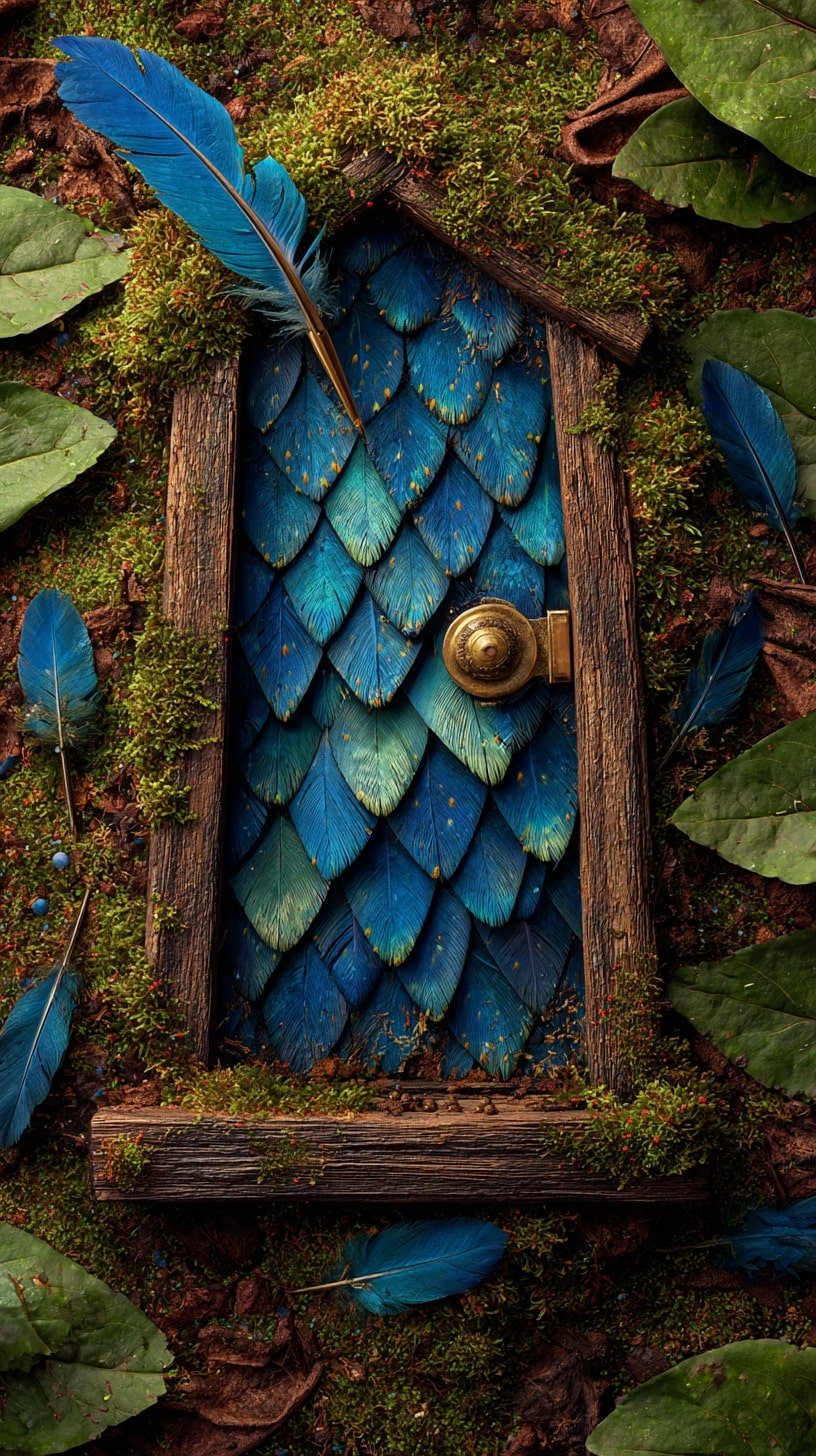
Overlapping feathers act like cedar shakes, but with iridescence and lightness. They shift tone, teal, cobalt, peacock, depending on where you stand. Saturated. Dense. Yet soft. Edges stay raw, framed in bark.
The contrast grounds it. Brass knob gleams like treasure, but it’s quiet, not flashy. Tucked under moss.
